I don’t understand why the Nelson waterfront consistently has a much richer range of waterfowl than can be seen elsewhere along the lakeshore. In the last few days, in addition to the usual mallards and geese, there have been: three species of grebes, wigeons, gadwalls, buffleheads, ring-necked ducks, scaups, and of course, coots. A few from Wednesday are illustrated.
Of the waterfowl shown, all but the grebe feast on aquatic plants. Maybe it is the underwater flora that attracts them to Duck Bay.
A female (front) and male (back) American Wigeon were often seen eating plants.
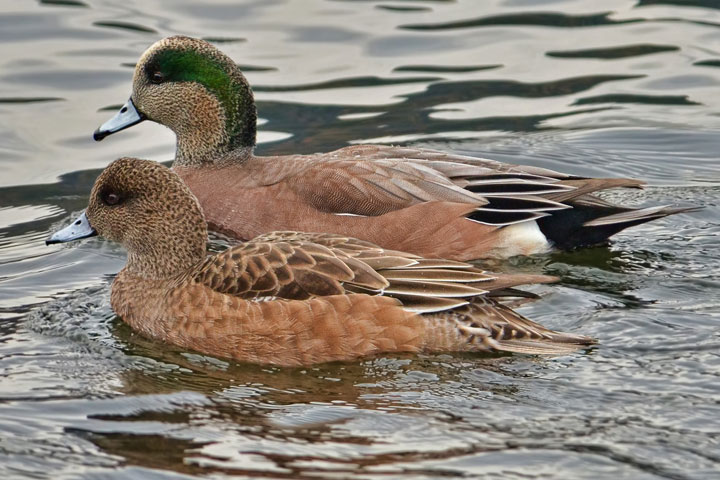
The Ring-necked Duck is named for a faint ring visible only when its neck is extended. This is the male,
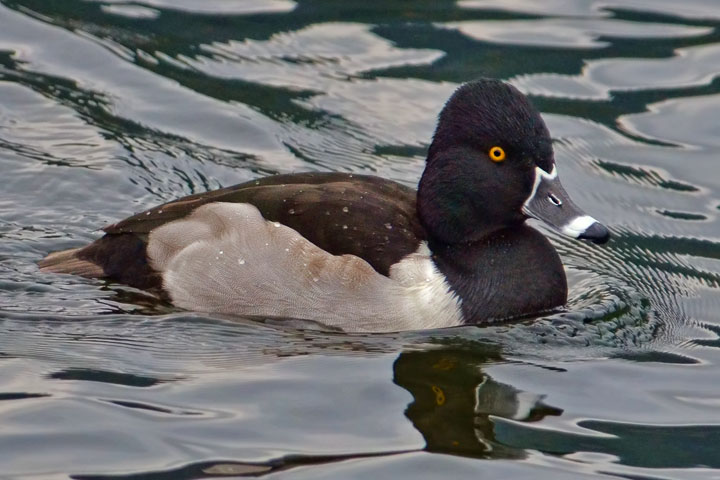
and this is the female Ring-necked Duck. The ring on her neck is seen here.
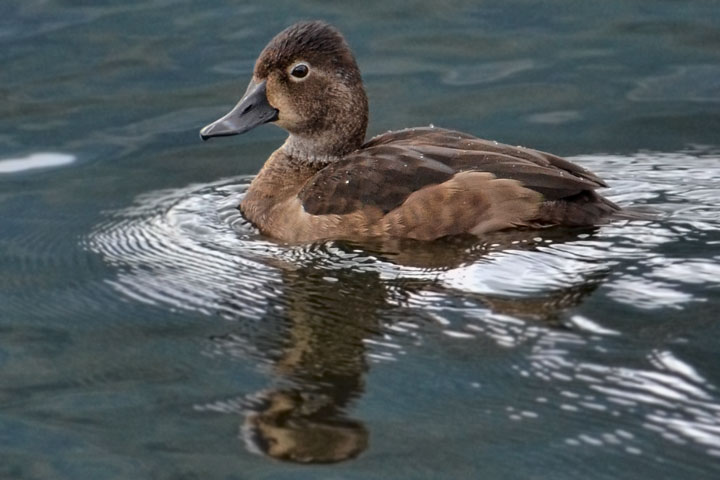
From a distance, the plumage of Gadwalls looks uniformly greyish brown, but it is actually finely patterned. This is the male,
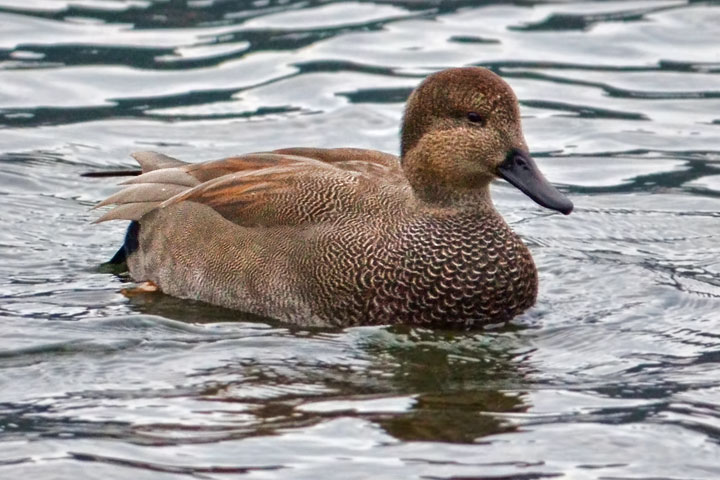
and this, the female gadwall mallard. See comment, below.
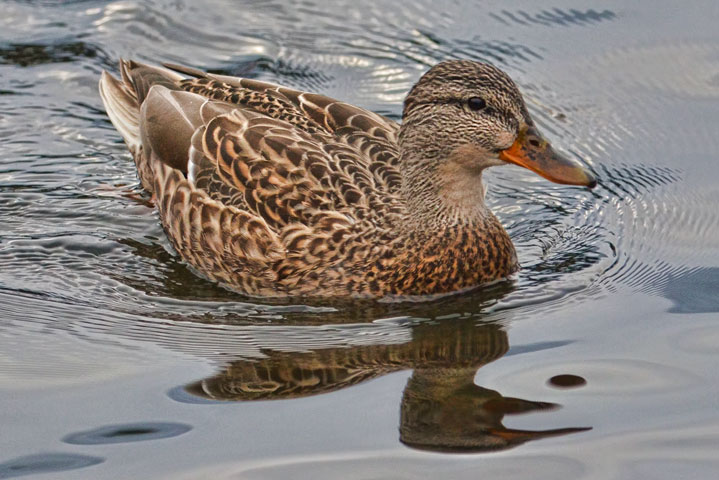
The Pied-billed Grebe did not mix with the other waterfowl—it is not a plant eater—and there was only one of them. At this time of the year, it does not display the patterned bill, for which it is named.
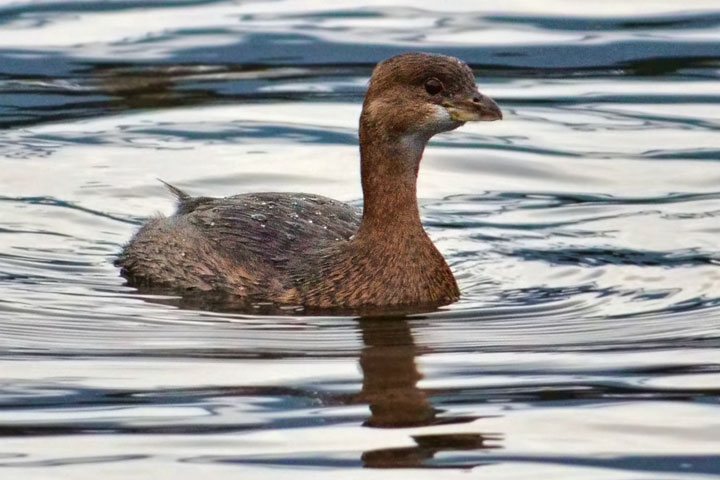
Then, there was a great crowd of American Coots, some of which stood in the shallows,
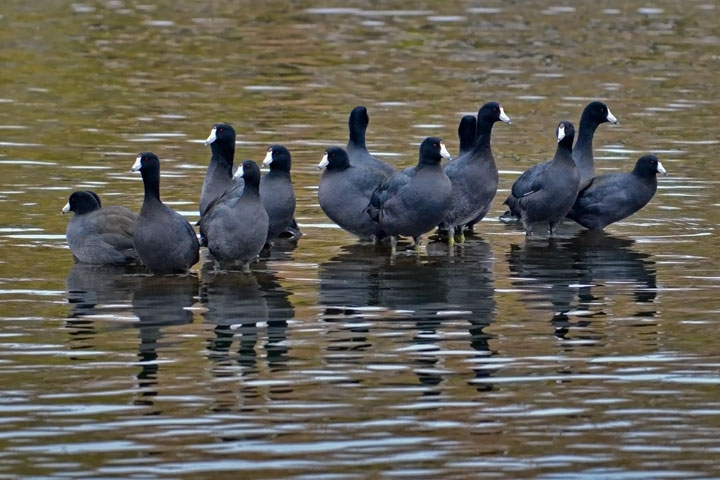
while others showed their lobed toes as they took flight.
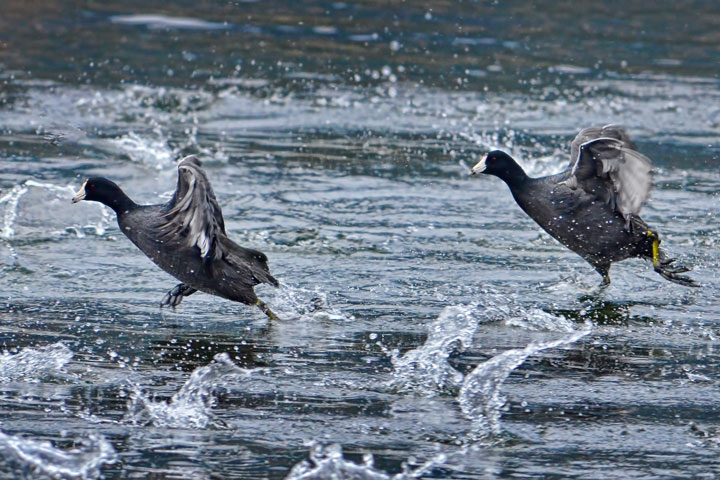

Really enjoy your photography Alistair – but was wondering about the female Gadwall. I’m not so sure it isn’t a female Mallard. Phil
Phil, thank you. I should stick with the males. Those female are really just too difficult for me to identify.
Thanks so much for sharing your search for knowledge and your stunning photography. I was very pleased to attend your presentation for Learning in Retirement and look forward to your regular blog entries. As I am often out walking my dog at the doggie park, it helps me pay attention in greater detail to the bird life along the waterfront that my Brittany Spaniel is so interested in.
Grace
As usual, your explorations are fun to enjoy Alistair. I note in your male Gadwall photo how nicely rounded the head is. The Sibley field guide and others depict the bird as often showing a high forehead and a somewhat more angular head. Your photo reminds us that these traits can vary considerably amongst waterfowl. Fortunately, this is not a critical field mark when identifying male Gadwall because all of the male ducks in breeding or winter plumage are very distinctively different and pose no identity problems. Some females (mallard vs gadwall) can be a little more subtle or males in “eclipse” plumage following the breeding season and before they molt into winter plumage which looks just like the breeding finery. Some juvenile ducks can be tricky to sort out as well. Female blue-winged and cinammon teal are 2 more bear cats that can be very confounding.
Rick